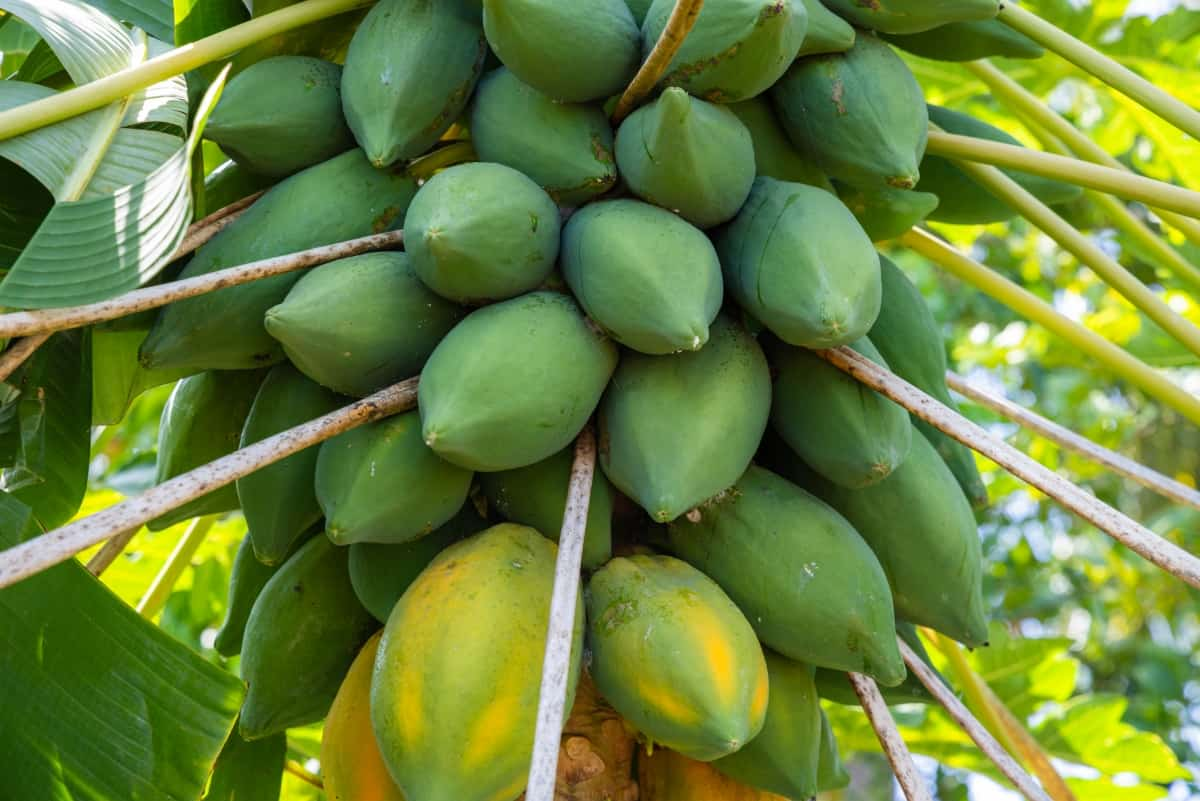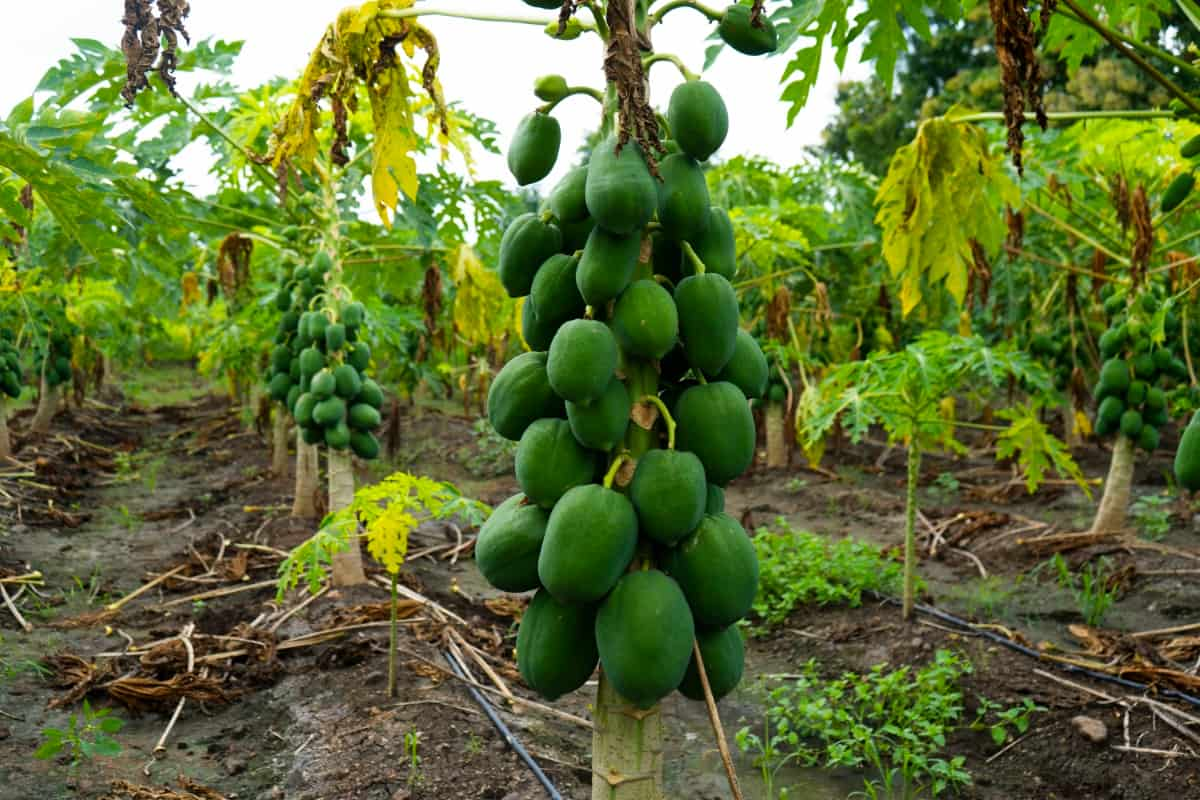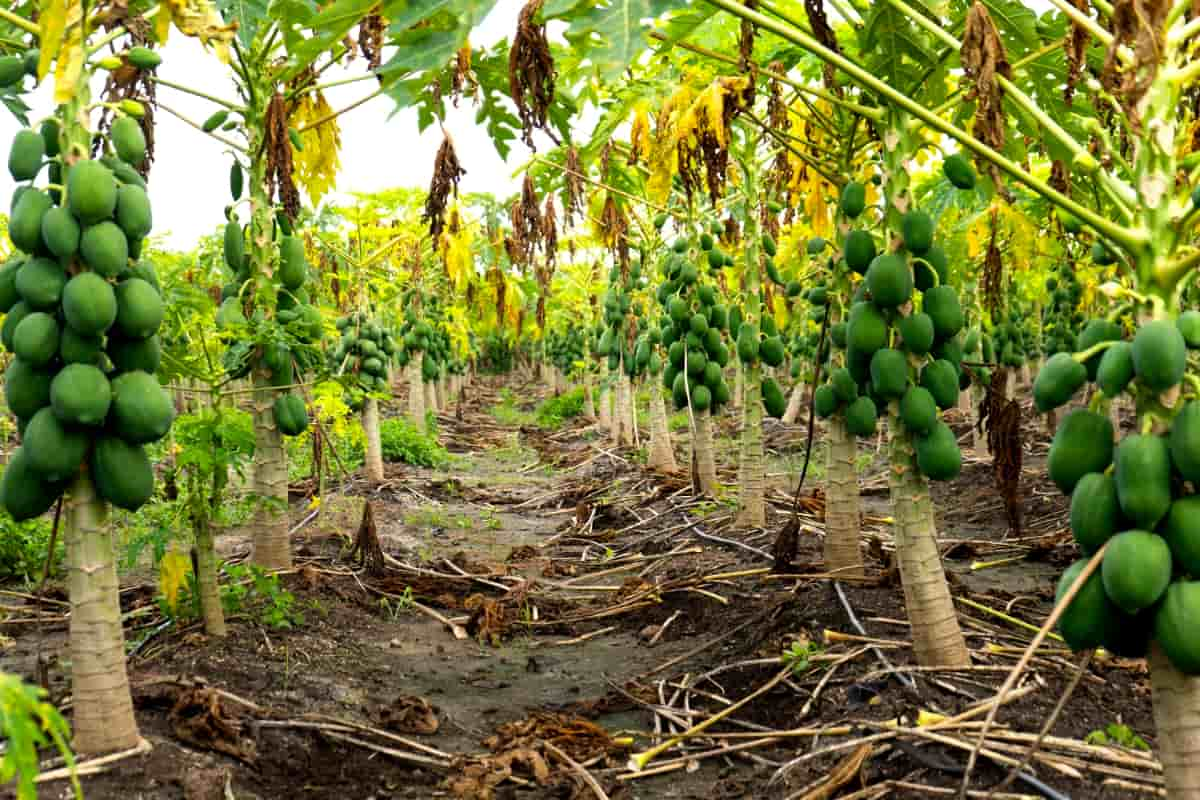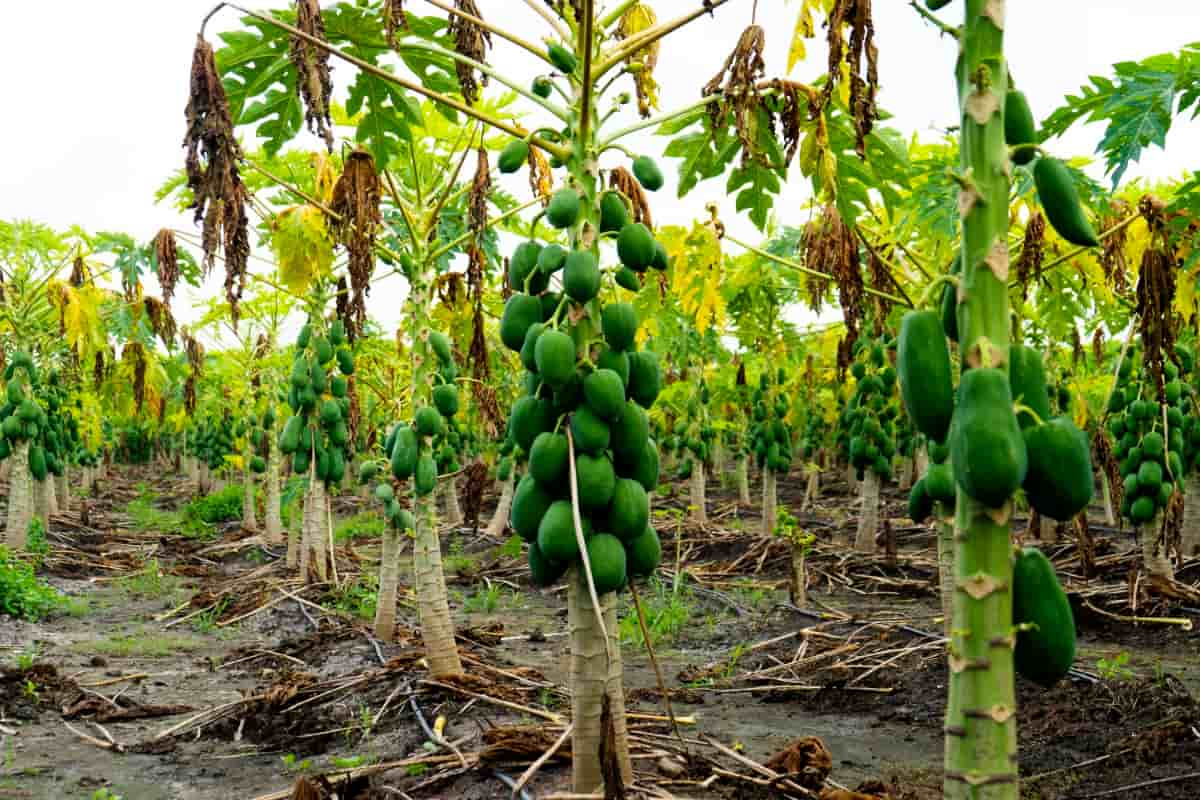Carica Papaya is an herbaceous succulent plant popularly known as pawpaw and belongs to the Caricaceae family. Fruit development in Papaya is a fascinating process that involves various stages of growth and maturation. From the tiny flower buds to the formation of the fruit, each step plays a crucial role in producing delicious and nutritious pawpaws for consumption.

Irregular Fruit Shape
Various factors, such as poor pollination, uneven watering, or genetic abnormalities, can cause Papayas to have irregular fruit shapes. Sometimes, environmental stressors like extreme temperatures or inadequate sunlight can also play a role in shaping the fruits oddly. While irregular fruit shapes may not affect the taste or quality of the Papaya, they can impact its market value and visual appeal. To prevent irregular fruit shapes in your Papaya plants, ensure proper spacing between trees for adequate airflow and avoid over-fertilizing.
Poor Fruit Set
It can be frustrating to see flowers not developing into healthy fruits. Poor fruit set can occur due to various reasons such as inadequate pollination, extreme temperatures, or nutrient deficiencies. To improve the fruit set, consider introducing more pollinators like bees to your garden.
They play a major role in transferring pollen between flowers for successful fertilization. It’s also essential to maintain a proper balance of nutrients in the soil by regularly fertilizing your plants with a balanced fertilizer. This will help promote healthy flower formation and increase the fruit set.
Fruit Drop Causes and Prevention
Fruit drop in Papayas can be a frustrating issue for growers, leading to decreased yield and financial loss. Several causes can contribute to fruit drop, such as inadequate pollination, nutrient deficiencies, water stress, or even pest infestations. To prevent fruit drop, it is essential to ensure proper care and maintenance of the Papaya plants throughout their growth cycle.
In case you missed it: How to Treat Viral Diseases in Papaya: Organic, Natural, Chemical and Homemade Control

Papaya Ring Spot Virus Impact on Fruit
Papaya Ring Spot Virus can wreak havoc on the fruit development of Papayas. This viral infection leads to distorted and discolored fruits, making them unappealing for both consumption and sale. The virus is primarily spread through infected plant material or insects, posing a significant threat to Papaya crops worldwide.
Once a Papaya tree becomes infected with the Ring Spot Virus, there is no cure. Prevention methods such as using disease-free planting material and controlling insect vectors are crucial in managing this issue. Farmers need to implement strict sanitation practices to reduce the risk of virus transmission within their orchards. The impact of Papaya Ring Spot Virus on fruit quality can result in substantial economic losses for growers.
Effects of Nutrient Deficiencies on Fruit Quality
Nutrient deficiencies can significantly impact the quality of Papaya fruits. When essential nutrients like nitrogen, phosphorus, potassium, and magnesium are lacking in the soil, it can lead to stunted plant growth and poor fruit development. Nitrogen deficiency causes pale leaves and smaller fruits, while phosphorus deficiency results in dark green leaves with a purple tint.
Potassium deficiency leads to weak stems and small fruits that are more susceptible to diseases. Magnesium deficiency manifests as yellowing between leaf veins known as interveinal chlorosis. To ensure optimal fruit quality, it is crucial to maintain a well-balanced nutrient supply through fertilization practices tailored to the specific needs of Papaya plants.
Sunburn and Heat Stress Damage
Sunburn and heat stress damage can be a significant challenge for Papaya fruit development. When exposed to excessive sunlight, the fruits may become scorched, leading to undesirable blemishes on their skin. This not only affects the appearance of the fruit but also impacts its overall quality.
In case you missed it: Papaya Ringspot Management: Symptoms, Disease Cycle, and Treatment

Adequate shading for Papaya plants during peak sunlight hours is essential to prevent sunburn and heat stress damage. Shading can be done by using shade cloth or strategically planting taller crops nearby to create natural shade. Additionally, maintaining proper irrigation practices is crucial in mitigating heat stress effects on Papaya fruits.
Pest Infestations Impacting Fruit Development
Pest infestations can be a real nuisance when it comes to Papaya fruit development. These tiny invaders, like aphids, mites, and beetles, can wreak havoc on Papaya trees, causing damage to the fruits in the process. They feed on the plant’s sap, leaving behind a trail of destruction. Aphids are notorious for transmitting viruses that can stunt growth and deform fruits. Mites suck out juices from leaves and stems, leading to wilting and reduced fruit quality.
Beetles tunnel into fruits, creating entry points for diseases. Prevention is key when dealing with pest infestations. Regularly inspecting Papaya plants for any signs of pests and promptly taking action can help mitigate their impact on fruit development. Implementing natural predators or using organic pesticides can also be effective strategies in controlling pest populations.
Fungal Diseases and Their Control
Fungal diseases can wreak havoc on Papaya fruit development, causing issues like rotting and discoloration. These infections thrive in humid conditions and spread quickly if not addressed promptly. To control fungal diseases, it’s important to implement preventive measures, such as proper plant spacing for good air circulation.
Regularly inspecting the Papaya plants for any signs of fungal growth is crucial in catching and treating the issue before it escalates. Pruning infected parts and removing fallen debris can also aid in preventing further spread of fungal spores. Maintaining a clean growing environment by removing weeds and practicing good sanitation practices is key to keeping fungal diseases at bay.
Physiological Disorders Affecting Papayas
Physiological disorders can significantly impact the development of Papayas. One common disorder is blossom end rot, where the fruit’s end becomes sunken and darkened due to calcium deficiency. To prevent this, ensure adequate soil moisture and proper calcium levels in the soil. Another issue is internal corking, which causes brown corky spots inside the fruit. This disorder can result from environmental stress or nutrient imbalances. Maintaining consistent watering and balanced fertilization can help reduce its occurrence.
In case you missed it: How to Manage Pest and Diseases in Papaya: Symptoms, Treatment, Control, and Prevention

Leaf curling is also a physiological disorder affecting Papayas, often caused by high temperatures or water stress. Proper irrigation management and shading during extreme heat can help mitigate this problem. Papaya growers must monitor their plants closely for any signs of physiological disorders to address them promptly and ensure healthy fruit development.
Harvest Timing and Its Impact on Fruit Development
Harvest timing plays a crucial role in the development of Papaya fruits. Picking them at the right moment ensures optimal taste and quality. If harvested too early, the fruit may lack sweetness and ripeness. On the other hand, waiting too long can lead to overripe fruits that are mushy and unappealing. To determine the ideal harvest time, consider factors such as skin color, firmness, aroma, and flavor. A mature Papaya should have a yellow hue on its skin with a slight give when gently pressed.
The sweet fragrance is also a good indicator of readiness. Timing your harvest accurately not only impacts the taste but also affects shelf life and overall market value. From irregular fruit shapes to pest infestations and fungal diseases, Papayas are susceptible to a range of challenges during their development stages. Additionally, staying vigilant for early signs of disease or physiological disorders can help maintain the overall health of the Papaya plant.
- Beneficial Insects in Pest Management
- Natural Solutions for Pest Control in Flower Gardens
- Types of Fungicides Used in Agriculture
- Common Issues in the Fruit Development Stage of Pomegranate Farming
- Fruit Development Issues in Papaya: Easy Solutions and Treatment
- Soil-Borne Diseases and How to Protect Your Plants
- Practices to Prevent Disease Spread in the Garden
- From Wilted to Thriving: How to Treat Root Rot Naturally in Houseplants
- Natural Remedies to Cure Brown Spots on Fig Tree Leaves